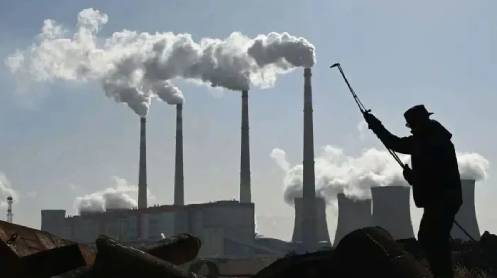As predicted, a second wave of COVID-19 is wreaking havoc on the world economy with many European nations contemplating new shut downs. It looks like it will be a tough winter for the oil markets. In a recent article carried in Reuters, two energy trading firms, Vitol, and Trafigura offered dour forecasts for the next few months. Trafigura’s Executive Chairman, Jeremy Weir offered a demand forecast of a decline of a million BOPD in the U.S. and up to 1.5 mm in Europe as a result, with global demand through the winter at 92 mm BOPD. He made an additional general comment in assessing the bleak near term outlook.
“As we move now into what we consider the second wave, our anticipation is to see for further demand destruction… So it’s really not looking good for the foreseeable future.”
Another energy trader, Vitol was a little less pessimistic, pegging demand at 96 mm BOPD for the winter months.
In this article we will summarize what we see as the key drivers outside the impact of the virus for oil in the next six to nine months, and how we are playing market opportunities to capitalize on this current weakness.
Oil in storage
This has been a drag on prices the entire year. Beginning the year with ~540 plus mm inventory balance, we have gradually been working it down, but at a painfully slow pace.

Expectations are for another major draw when they report this week, driving the inventory overhang down toward ~470 mm as of the last week of October, 2020. That’s a decline rate over the year of roughly 7-mm bbls per month.
Keeping that constant (we think the decline will begin to accelerate a bit actually), we should exit 2020 with ~450 mm bbls in storage, and bring the tally comfortably back into the 5-year average for this time of year. 450 mm bbl may sound like a lot, but it’s less than a 1-month supply, to put it in perspective for you.
We should enter 2021 without the weight of an inventory balance that depresses prices. The 8-mm bbl draw down noted in the API report yesterday is another good step in that direction.
Shale output forecast Shale production has delivered nearly all of the marginal field increases in production for the last decade…around the world. It was called the shale “miracle” for a reason. This was true for a decade that ended in the first quarter of 2020.

EIA-Drilling Productivity Report-data, graph by author
What happened? The major causes are pretty well known, and many of them were discussed in a recent OilPrice article, and it’s worth a reread to get the broad spectrum of key drivers for oil.
Fundamentally shale production is expensive compared to lifting costs in the Middle East, particularly Saudi Arabia, where it costs just a few dollars per barrel to produce. After the Saudi price war of 2014-15, shale drillers cut a lot of costs out of their operation and reduced breakevens from ~$70-80 bbl to an average in the low $30’s. You can see the approximately 1-mm bbl decline from 2015-16 as this cost cutting took place. And, then over the next three years the shale drillers went back to work with a vengeance, and ran daily production from shale to dizzying heights. Topping out at ~9.3 mm bbls in March of this year.
The second OPEC+ price war in March of this year changed the dynamic once again as oil prices fell through the 2016 floor of ~$26. This time shale drillers almost universally reacted by not redesigning the wells to be more efficient and cheaper to drill, but by slashing capex, idling equipment, laying off thousands of high skill employees, and pledging to no longer chase growth at any price. A new term, “Capital Restraint” entered the lexicon.
Related: How Big Can the Tesla Bubble Get?
Beginning in March, by the tens every week the engines of shale production, rig and frac spreads fell silent as capital restraint took hold. From March to June active rigs declined to 251, and frac spreads bottomed at 45. Percentage declines of ~70% and 87% respectively.
Drilling has rebounded marginally to 287 active rigs while frac spreads have roared back topping 134 recently. The essence of this is that shale production activity is well below the rate required to sustain shale at its current rate of ~7.6 mm BOPD. Production is going to fall in the shale patch removing the most significant engine of growth from oil supplies today. We think that from its peak in March 2020, shale production could be cut in half as capital restraint meets the 40-50% annual decline rate of shale wells.
OPEC+
Two things happened to take the teeth out of the OPEC+ price war. First, the production from shale was more resilient than people had thought it would at price levels below $35 bbl. This was thanks to the Drilled but Uncompleted wells-DUCs, withdrawals that were being held inventory. As noted above this is a temporary fix that will exhaust itself in 2021 as new drilling for replacement wells is at an unsustainably low rate.
The second price war lasted only for about a month before Saudi Arabia and Russia began to discuss withholding production from previously agreed quotas, as true demand destruction impact of the virus began to take hold. This culminated in the July accord where a total 9.7 mm BOPD were withdrawn from the market to shore up pricing. In August this was reduced to 7.7 mm BOPD and scheduled to be scaled back further beginning in January, 2021.
Now with the second wave of the virus taking hold OPEC+ (Saudi Arabia and the Russians), are discussing extending these cuts, and perhaps expanding them. This was noted in a recent Reuters article. A source cited in the article noted that more cuts might be coming as the year rolls over.
“On Monday, representatives of Russian oil companies and Russian Energy Minister Alexander Novak held talks that also raised the possibility of maintaining rather than easing the output curbs, two industry sources said.”
This decision should be finalized in the general meeting that occurs on November 30th, with an announcement coming December 1st. We think the chances are very good that additional barrels will be withheld from the market in the first half of 2021, thanks to the economic shut downs now taking place in Europe, as noted earlier.
Your takeaway
With global demand at 92 mm BOPD at least for the first half of 2021, the ~4-5-mm BOPD fall in shale production by mid-year and the absent OPEC+ production will sharpen the slope of the inventory drawdown in the U.S. and China. China’s resilient demand is one of the bright spots in the demand picture.
The EIA graphic below shows a gap of about 5 mm BOPD between demand and supply for the first half of 2021. We think this could be somewhat understated as until a price signal is sent, drilling will not recover in U.S. shale. The true supply shortfall could be in the 8-10 mm BOPD, and further shrink inventories as the year waxes on.

This scenario sets the stage for a complete revaluation of shale producers, especially ones like Devon Energy, (NYSE:DVN) that has just expanded its Delaware basin prime Wolfcamp acreage with its acquisition of WPX Energy, (NYSE:WPX). Opportunities are not limited to Devon though. There is a target rich environment out there now thanks to the recent weakness in oil prices, and the recent spate of consolidation. We discussed one in a recent OilPrice article. Consolidation that is likely to continue as long as quality companies are at depressed prices.
It’s only going to get better from here, and investors should be carefully evaluating their portfolios for additions of these key companies. There is a window of opportunity to add shares in these companies at depressed prices that will likely close as oil prices begin to rise toward $50 bbl in 2021.




